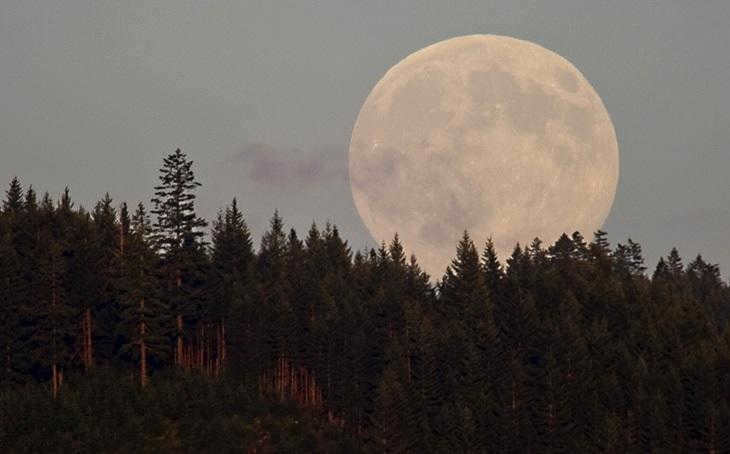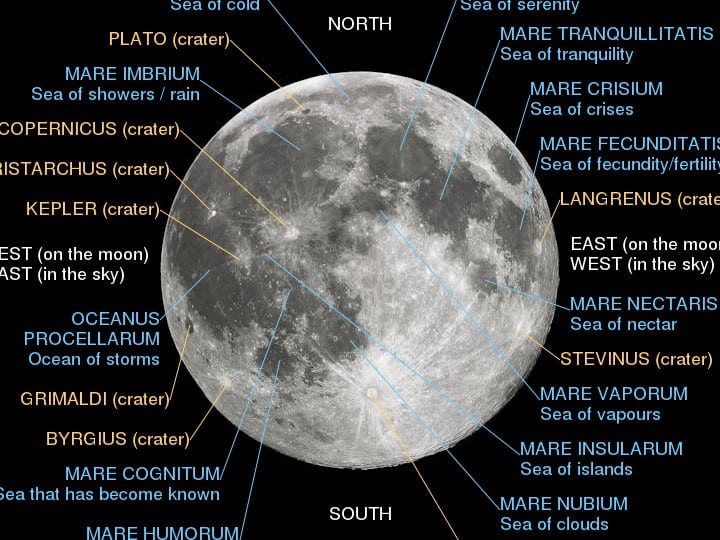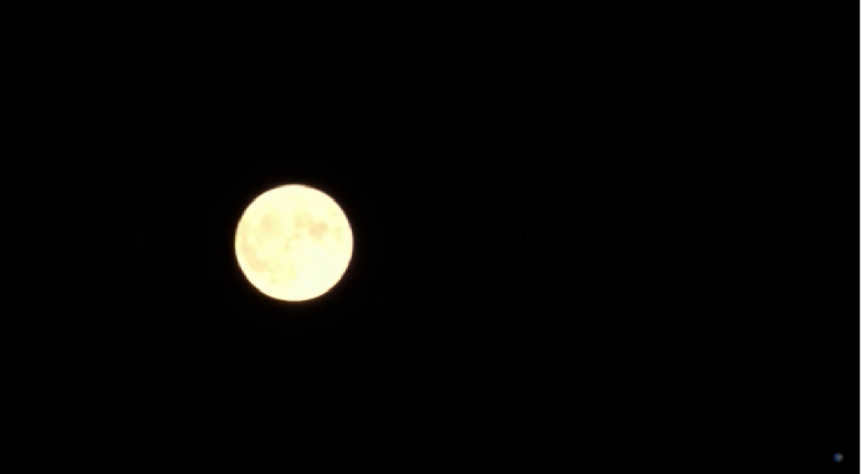

This occurrence is referred to as a Super Moon – the moon, the Earth’s satellite, is at its closest proximity to our planet. Consequently, it illuminates the night sky with 30 percent more brightness.
Schoolchildren using telescopes can observe the surface of the moon, but they can only see the craters at the edges. This is because during the Super Moon, the Earth’s satellite is too bright. This happens several times a year when the moon is closest to our planet. Unlike moving in a circle, the moon follows an elliptical path. “Once a year, during a full moon, the moon reaches its closest point to Earth. At this moment, it appears brightest and it seems as if the moon has moved closer. This is indeed true, as it gets about 7 percent closer, and this change is noticeable even to experienced observers,” explains Vladilen Sanakoev, an engineer at the UrFU Educational Observatory.
Astronomers have little interest in the Super Moon as it poses a hindrance to their work. The brightness of the natural satellite makes it impossible to study stars professionally. However, ordinary individuals are drawn to the massive Moon like a magnet. It is captured on video in various parts of our planet, and astrophotographers strive to capture the most incredible images. Schoolchildren from Ekaterinburg visited the Kourovsky Observatory to witness the grandeur of the Moon and the stars. The students confess that they had limited knowledge before their night-time excursion, but now the entire Universe has unfolded before them. Some even contemplate a future in astronomy.

Radio buttons
Radio Streaming
Online video button
The head of GTRK “Ural” is Irina Shchukina.
For inquiries, please contact: 620026, Ekaterinburg, ul. Lunacharskogo, 212 tel: +7 (343) 257-50-60 , fax: +7 (343) 261-68-34;
e-mail: [email protected]
© State Internet Channel “Russia” 2001-2023. The founder is the Federal State Unitary Enterprise “All-Russian State Television and Radio Broadcasting Company” (VGTRK). Media registration certificate El No. FS 77-59166 of 22.08.2014. (Registered by the Federal Service for Supervision of Communications, Information Technologies and Mass Media (Roskomnadzor).
Editor-in-Chief of GTRK Rossiya’s Main Editorial Office is Elena Valeryevna Panina. Veronika Oleneva serves as the Editor of the GTRK Ural website. You can contact the website editorial office at +7 (343) 251-80-80 or via email at [email protected]
- PostcardsDiscover a new collection of postcards for every occasion.
- Cheap air ticketsFind the best prices, easy search, no extra fees, available 24/7. Book now and pay later!
- Always at your fingertipsA unique feature that allows you to add custom HTML code to your profile. You can include banners, counters, and other elements.
- TV programStay up-to-date with the weekly TV program provided by Akado TV guide.
- I work as a photographerPlugin designed to help users share their photos in their online diary. The minimum system requirements for this plugin include Internet Explorer 6, Fire Fox 1.5, Opera 9.5, Safari 3.1.1 with JavaScript enabled. It is possible that the plugin will function on other browsers as well.
–Photo album

General 07:08 01.11.2013 Photos: 10
–Headings
- WORKS OF FAMOUS ARTISTS (8265)
- Still life paintings (1433)
- EXPLORING FRIENDS’ DIARIES (2172)
- NEW FASHION TRENDS (383)
- SPORTS (142)
- FUN POSTS (81)
- Entertainment posts (63)
- Extraordinary individuals (12)
- ALL ABOUT PLASTIC WINDOWS (8)
- WILDLIFE (2084)
- Good Morning Country (337)
- Good Morning, Country (317)
- LAKES AND RIVERS (279)
- SEASONS OF THE YEAR (162)
- TAIGA TRAILS (121)
- POOLS AND MOUNTAINS AND MORE (120)
- WATERFALLS (89)
- Volcanoes and other natural phenomena (70)
- Oceans and Seas . (65)
- FLORA AND FAUNA ! (52)
- Unlikely insects (43)
- MUSHROOMS NUTS AND MUCH MORE ! (19)
- FISH ! (13)
- SPIDERS AND MORE ! (12)
- Honey plants: sainfoin! (11)
- FISH WORLD (7)
- NUTS AND THEIR BENEFITS (6)
- Arctic (3)
- MUSHROOM SPECIES ! (3)
- Stones you should not pick up (2)
- BOLOTO. (1)
- DOCUMENTARIES (1616)
- ARMY EVERYDAY LIFE ! (646)
- NO ONE IS FORGOTTEN ! AND NOTHING IS FORGOTTEN (303)
- ART ! (1366)
- performances (294)
- PORCELAIN AND MANY OTHER PRODUCTS ! (262)
- POETS AND WRITERS (120)
- JEWELRY (57)
- folk talents ! (49)
- gallery (38)
- Puppeteers creators ! (22)
- Exquisite decoration of bottles and jars. (3)
- Circus and theaters (2)
- Artifacts (1)
- PARKS, SQUARES AND GARDENS (1320)
- Monuments and sculptures (349)
- Rural areas ! (97)
- Rural areas ! (79)
- ZOO PARKS (36)
- STATION SQUARES (11)
- HISTORY OF ALL AGES . (1050)
- POLITICS AND PUTIN (717)
- RELIGION (956)
- BIBLICAL TRUTHS . (67)
- Meditation “Transition to the New State of Being&qu (49)
- PSALMS (2)
- Online Movie Theaters (866)
- TV – online (61)
- MOVIE PANORAMA (23)
- MUSEUMS (849)
- Beautiful precious crystals and stones (145)
- ESTABLISHMENTS (131)
- Bridges (90)
- FONTANTS (29)
- Theater buildings – architectural landmarks. (22)
- Armaments (2)
- Recognition, Decorations, Commendations. (2)
- CASTLES, PALACES, FORTRESSES, AND MORE (813)
- Caverns and beyond. (107)
- HOSPITALITY AND LODGING. (36)
- TURRETS (33)
- PHOTOGRAPHS OF MY COMPANIONS (753)
- Around the Globe (612)
- LITERARY COLLECTIONS (533)
- Myths, legends, fables, sagacity. (408)
- Parables (79)
- RELIGIOUS ICONS (482)
- RECOLLECTIONS (209)
- EVERYTHING FOR GARDENERS (474)
- CULINARY PRESERVATION (450)
- Foods beneficial and detrimental to the intestines (183)
- SEAFOOD (13)
- PROFESSIONS (2)
- Around the Globe (449)
- AVIAN WORLD (449)
- NATIONAL PARKS (99)
- BEEKEEPING AND BEES (7)
- PSYCHOLOGY (407)
- REFLECTIONS (125)
- Philosophy of Life (74)
- Esoterica (56)
- Aphorisms (21)
- Ayurveda (16)
- GENETICS. (2)
- Telepathy (1)
- SPAS AND RESORTS (377)
- ISLANDS (189)
- ISLANDS (132)
- BEACHES (30)
- Bays, terminals, marinas. (6)
- LONG LIFE (318)
- MEDICINAL PLANTS. (308)
- Jewelry (298)
- JEWELRY (51)
- ART PICTURES (282)
- Inscriptions (3)
- DIABETES (273)
- FOOD. (138)
- MEDICINE AND DRUGS!!! (70)
- TRAFORETS (214)
- Cars, motorcycles and other machinery (213)
- EVERYTHING FOR CHILDREN (210)
- OUR CHILDHOOD (33)
- CITIES – HEROES (188)
- HEROIC DEEDS OF A SOLDIER (57)
- PLACES (15)
- AUDIO FAIRY TALES (152)
- riddles, proverbs and many other things! (33)
- YERALASH (3)
- GAMES (1)
- ALCOHOLIC DRINKS (132)
- HEALING INFUSIONS (5)
- CALENDARS (99)
- DAYS OF THE WEEK (26)
- Ancient Civilizations (91)
- Times and Ages (26)
- DANCES (87)
- PROSE (85)
- QUOTATIONS (17)
- Most interesting things on youtube (79)
- THEATERS (63)
- Markets, fairs, bazaars. (7)
- CULTURE (2)
- RESORTS, SANATORIUMS (62)
- HOTELS AND INNS. (21)
- Lighthouses. (6)
- BATHS, SAUNAS AND MUCH MORE! (3)
- ALL FOR DIARIES (62)
- Rare and beautiful stones (57)
- BONES (39)
- ROMANCES (28)
- FAMOUS AND GREAT MUSICIANS (21)
- CEMETERY OTHER BURIALS (19)
- ENGLISH LANGUAGE (16)
- Comedians’ Asylum . Luck . (10)
- SPORTS (9)
- WEATHER FORECAST (3)
- all about bees and beekeepers (5)
- Healing infusions (4)
- COINS , CURRENCY . RUBLES . (2)
- Oceanarium and Aquariums (2)
- FANTASTICS (2)
- AVATORS (2)
- SCIENCE (1)
- LIGHTHOUSES (1)
- shocking hypotheses (1)
- amazing plants (1)
- Chiromancy. (1)
- Internet store (1)
- (0)
- VIDEO FILMS. (42537)
- MUSIC (9243)
- EVERYTHING FOR FRIENDS AND GIRLFRIENDS (1685)
- LIFE STORIES (165)
- radio wave (140)
- cinematography . (116)
- BLUE LIGHT (7)
- MOVIE MAGAZINE WICK . (7)
- WORDS (26368)
- VARIOUS RECOMMENDATIONS. (9180)
- SPIRITUAL ADVICE. (773)
- Traditional signs (172)
- BEAUTY TIPS. (113)
- EVERYTHING ABOUT RETIREMENT. (41)
- Milk and dairy products! (31)
- FISHING AND HUNTING. (10)
- Beauty trends! (7)
- EDUCATION (3)
- Choosing an effective dishwashing detergent (1)
- INTERESTING LINKS. (1735)
- MENU (14)
- WORLD OF INTEREST. (1750)
- DIARY DESIGN (45)
- HUNTING AND FISHING (39)
- DIARY SCHEMES (2339)
- SELF-CARE. (1091)
- FLASH DRIVES, GAMES (299)
- Drinks Recipes. CAKES. CAKES. PIES. ROLLS (61412)
- COLLAGES (7391)
- BOOKS (4889)
- TRAVEL. (2803)
- USEFUL LESSONS. (2628)
- ANIMAL WORLD. (2475)
- HOLIDAYS AND GREETINGS (2359)
- PHOTO BEAUTY (2264)
- HEALTH AND BEAUTY (1713)
- RECIPES (1558)
- PARABLES (1316)
- POSTCARDS (1266)
- Myths and legends of different cultures and stories about justice (1178)
- USEFUL PROGRAMS! (849)
- ACTORS AND SINGERS (705)
- A VARIETY OF FLOWERS (667)
- CARTOON ADVENTURES (612)
- EPIGRAPHS (609)
- BERRIES AND FRUITS (559)
- PLAYCASTS (506)
- IT’S IMPORTANT (488)
- PHOTO – YANDEX (433)
- COMEDY (427)
- PRAYERS (349)
- BEAUTIFUL LANDSCAPES (334)
- EVERYTHING FOR THE GARDENER (280)
- ANIMATIONS (244)
- FUNNIES (227)
- INTERESTING WEBSITES (204)
- UNDERWATER WORLD (186)
- NEEDLEWORK (178)
- EVERYTHING FOR GARDENERS (164)
- EVERYTHING YOU NEED TO KNOW ABOUT COFFEE, COCOA, AND TEA. (141)
- CELEBRITIES AND ICONIC FIGURES! (140)
- DISCOVER OUR VARIETY OF FRESH VEGETABLES (118)
- THE MANY BENEFITS OF DIFFERENT TYPES OF HONEY! (114)
- JOIN THE DISCUSSIONS WITH OUR READERS (103)
- CUSTOMIZE YOUR DESKTOP WITH STUNNING WALLPAPERS (101)
- EXPRESS YOURSELF WITH CREATIVE CLIPARTS (98)
- ENHANCE YOUR VIDEOS WITH BEAUTIFUL FRAMES (89)
- ALTERNATIVES TO COFFEE AND TEA: HERBS AND FLOWERS (84)
- EXPLORE OUR FEATURED PLAYERS (73)
- FIND INSPIRATION WITH COLORFUL WALLPAPERS (66)
- ADORN YOUR WRIST WITH STUNNING WATCHES! (60)
- BECOME A MUSHROOM AND BERRY GROWER (45)
- STAY UPDATED WITH OUR INFORMER (35)
- ALERT! BE AWARE OF POTENTIAL DANGERS (34)
- EXPLORE MORE OPTIONS WITH OUR BUTTONS (26)
- ADD SOME STYLE TO YOUR PAGE WITH DIVIDERS (21)
- GET NOTICED WITH EYE-CATCHING SIGNS (20)
- DISCOVER THE BEST RESTAURANTS, CAFETERIAS, AND CANTEENS (9)
- TEST YOUR KNOWLEDGE WITH INTERESTING QUIZZES! (5)
- STAY INFORMED WITH THE LATEST NEWS AROUND THE WORLD (1136)
- FRAME YOUR LIFE’S MOMENTS (15032)
- DISCOVER AMAZING AND UNBELIEVABLE THINGS (203)
–Quote
A group of beluga whales were found stranded in Kamchatka, but fishermen managed to rescue them. The incident took place along the Okhotsk Sea.
Watch the video from the magazine “Popular Geography” featuring the smallest countries in the world. As you may already be aware.
Discover the Temple of the icon of the Mother of God “Vsetsaritsa” and the significance of prayers before the icon of the Blessed Virgin Mary “Vsetsaritsa”.
Dortmund, known as the birthplace of the legendary football, offers picturesque and charming sights to explore.
Experience A.Vampilov’s “Twenty Minutes with an Angel” (1989) by watching it here: https://youtu.be/9JLIJawabJ8. This masterpiece was produced in the given year.
–Search by journal
–Sign up for email updates
–Areas of interest
–Acquaintances
–Frequent readers
–Online communities
–Data and analytics
Astronomers are excited about the upcoming event: the largest Moon in 70 years.
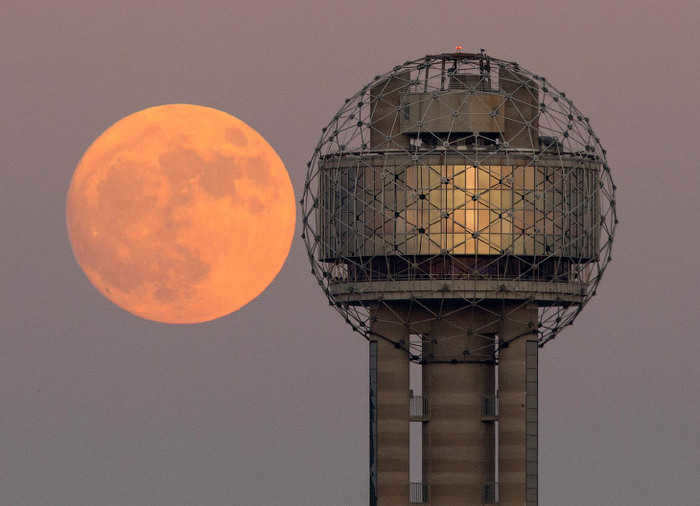
- A unique phenomenon occurred today with the Moon, as it appeared in a ring of fire during a solar eclipse. This mesmerizing event took place at the Moon Bridge in Beijing, capturing the attention of many spectators.
On Monday, people on Earth had the opportunity to witness a rare occurrence – a super moon, which is not only the brightest of this year, but also the brightest in the past 70 years. The Moon came closest to the Earth on November 14, marking the shortest distance between the two since 1948. It won’t be until 2034 that we can witness such a brilliant super moon again.
On Sunday, November 13, the super moon was already visible. The difference in distance between the Moon and the Earth on Sunday night and Monday night is minimal. Whether in the city or in nature, as long as the sky is clear, you can catch a glimpse of the super moon.
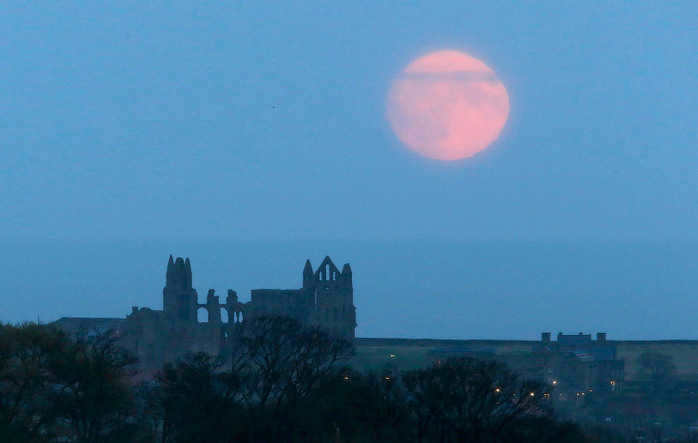
This year will have three super moons, and the second one is expected to appear on December 14, as stated by scientists.
On November 13, 2016, there was a super moon sighting in Baikonur, Kazakhstan, along with the presence of Vladimir Ilyich. (Photo by Shamil Zhumatov Reuters):
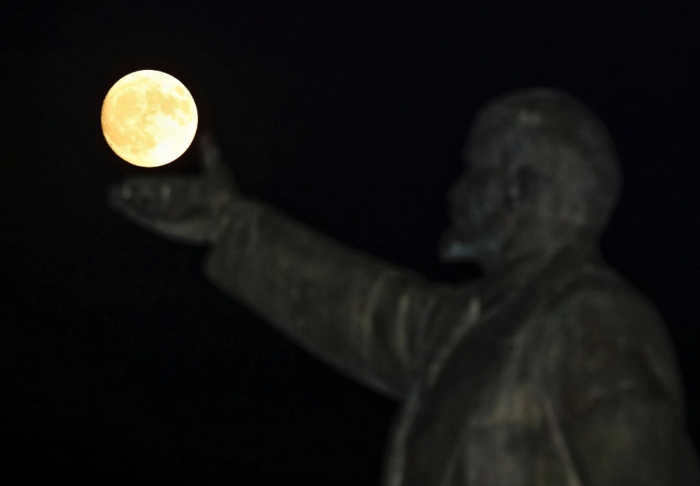
A supermoon is a celestial event that can be witnessed when a full or new moon aligns with perigee, the point in its orbit when it is closest to Earth. This occurrence causes the moon to appear 14% larger and 30% brighter than its regular size.
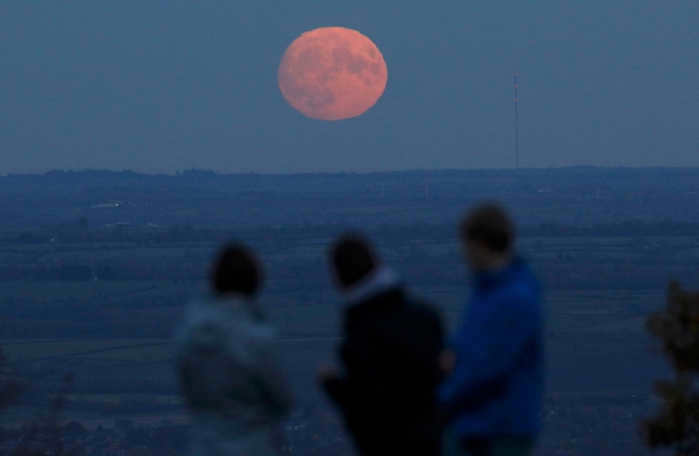
At its closest point, the Moon is located 356,512 km away from the Earth.
On November 13, 2016, a supermoon coincided with the presence of one of Europe’s largest observation wheels, the London Eye, in London, United Kingdom. This remarkable event was captured by Toby Melville of Reuters.
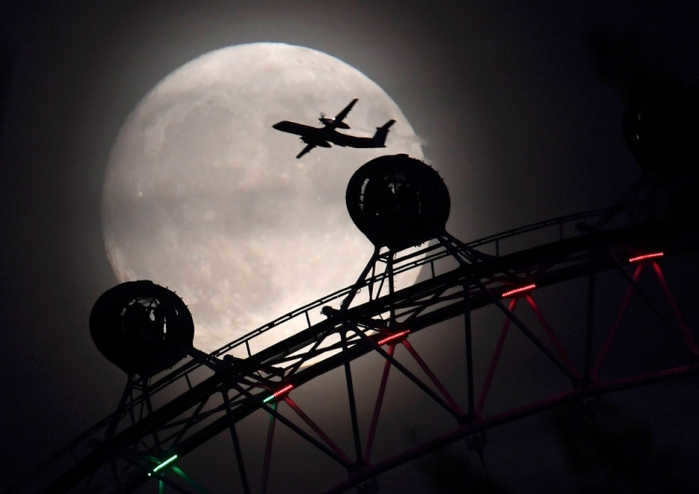

When the Moon is closer to Earth, its influence is stronger. Therefore, during supermoons, the Moon’s impact on our planet is maximized.
The biggest moon in 70 years was seen in Glastonbury, Britain, on November 13, 2016. (Photo by Rebecca Naden Reuters):
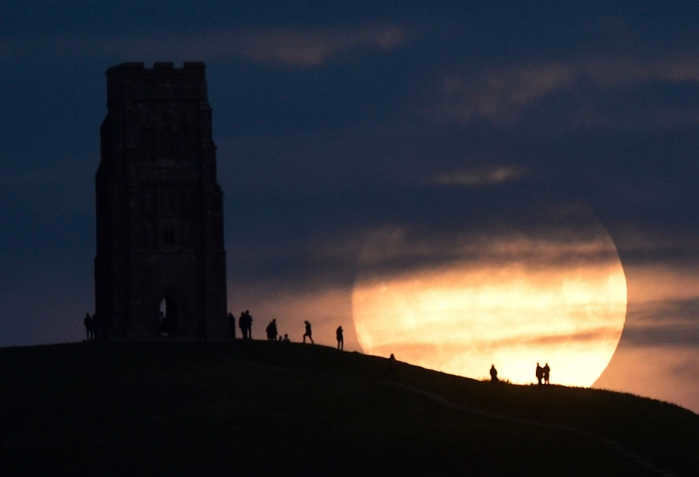
For many years, experts have been debating the correlation between supermoons and various catastrophes. Some of them draw attention to the fact that devastating earthquakes and volcanic eruptions often occur during the days when these phenomena are observed. They point to examples such as the 2004 earthquake in Southeast Asia and the earth tremors in Japan in 2011. The recent earthquake in New Zealand is now being linked to the occurrence of a supermoon.
Germany, November 13, 2016. (Photo by Kai Pfaffenbach Reuters)
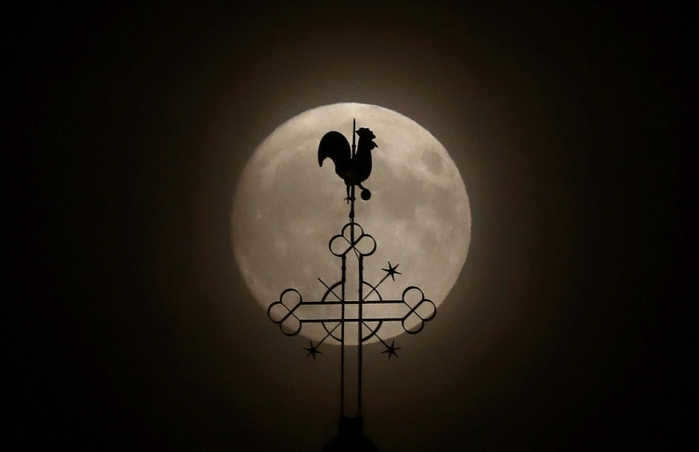
Carousel swing. The super moon was captured in London, UK, on November 13, 2016. (Photo credit: Neil Hall/Reuters)
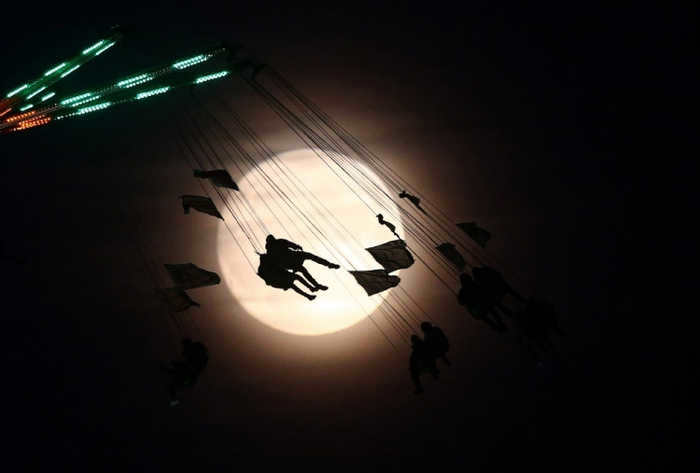
When viewed from an airplane cabin, the moon appears even larger as it approaches. This photo was taken in Kathmandu, Nepal on November 13, 2016 by Navesh Chitrakar for Reuters.
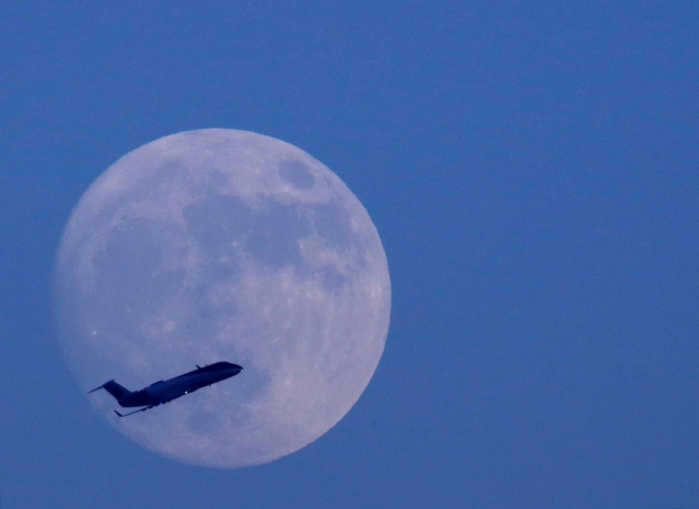
The most massive natural satellite of our planet and an aircraft. The state of California witnessed this incredible sight on November 13, 2016. A photograph taken by Nick Ut captures this mesmerizing moment:
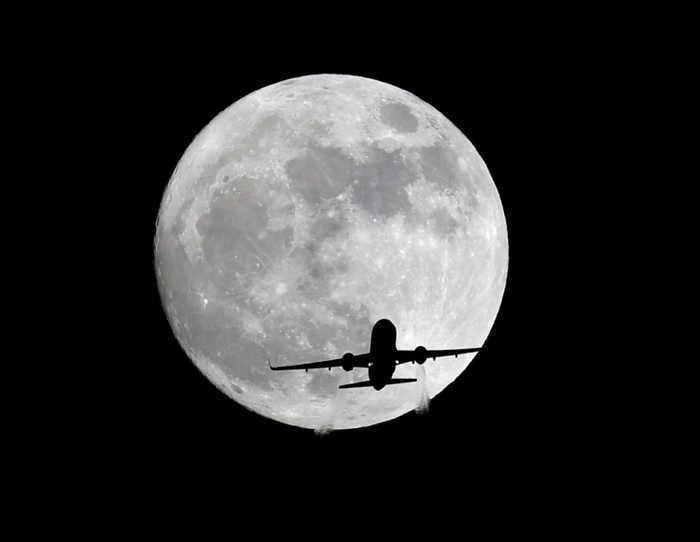
On November 13, 2016, a super moon was seen in St. Louis. This famous arch, known as the “Gateway to the West”, was created by the Finnish-American architect Eero Saarinen in 1947. Standing at a height of 192 meters and with a base width of 192 meters, this arch is the tallest monument in the entire United States. (Photo by David Carson):
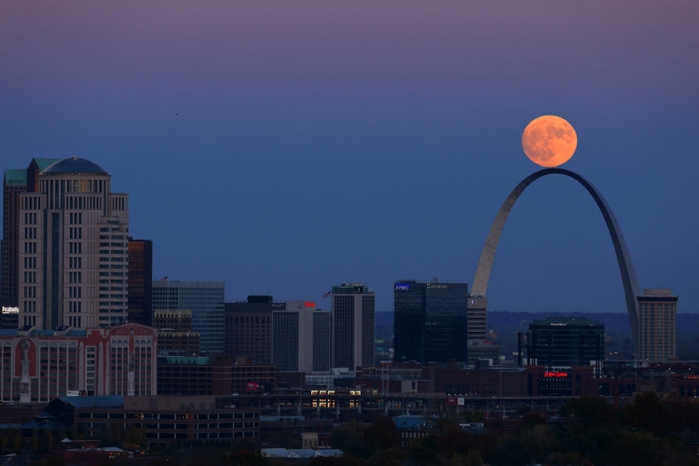
Getting even nearer. (Picture taken by David Carson):
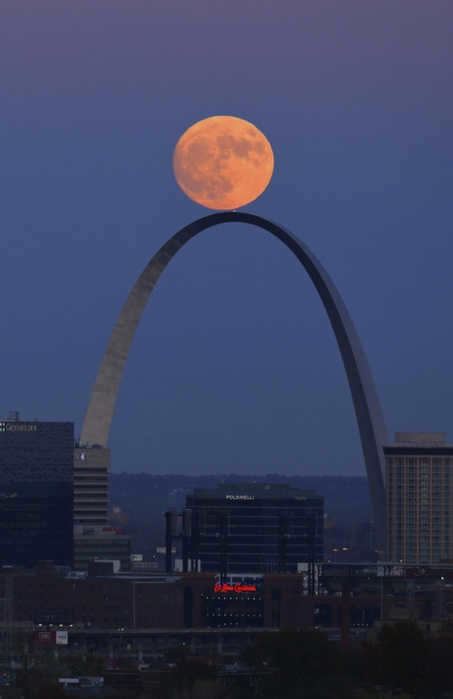
A photo taken by Nick Ut shows a super moon on a highway in California on November 13, 2016:
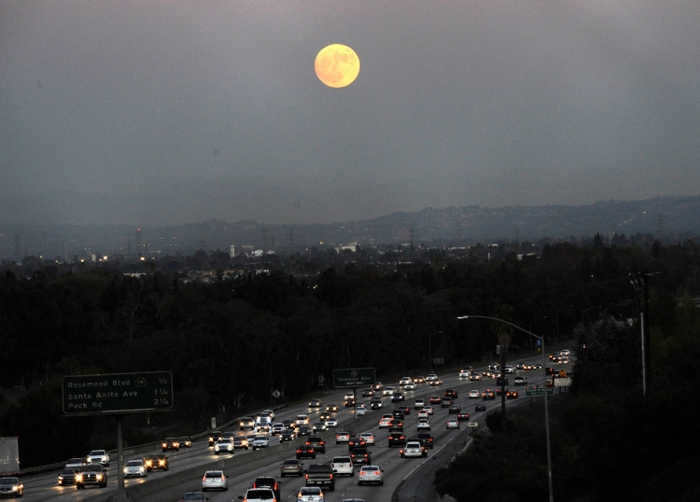
The largest lunar body and the Emirates Air Line aerial cable car over the Thames River in London on November 13, 2016. (Photo by Glyn Kirk):
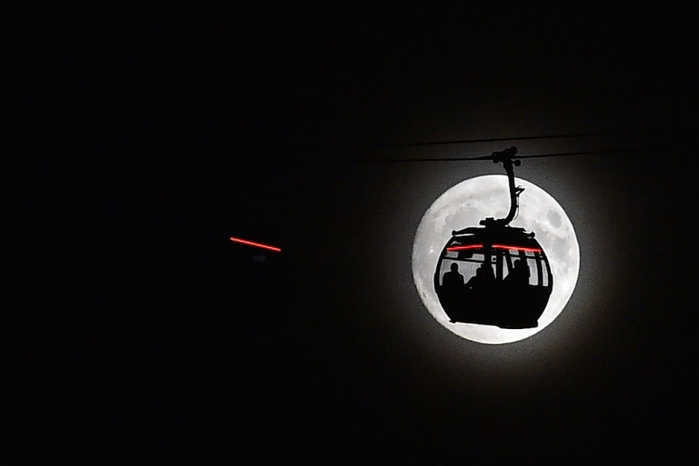
On November 13, 2016, an enormous moon illuminated the night sky in Columbus, Ohio. The stunning image was captured by photographer Adam Cairns.
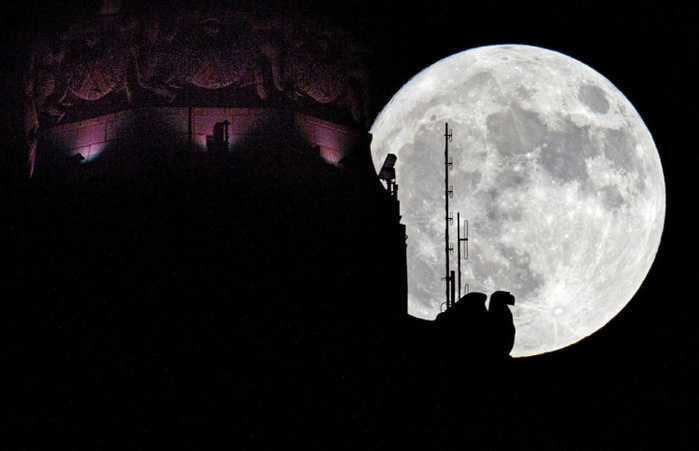
Charlie Riedel captured an impressive sight in Kansas City, Missouri on November 13, 2016 – a super moon:
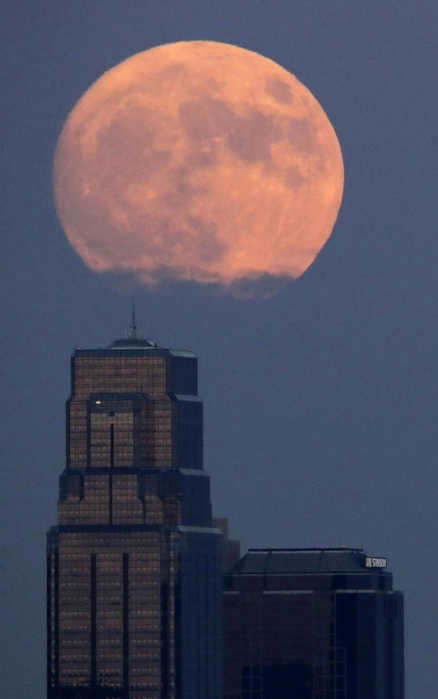
The largest moon in 70 years was captured by John Hart’s camera near Lake Michigan on November 13, 2016.
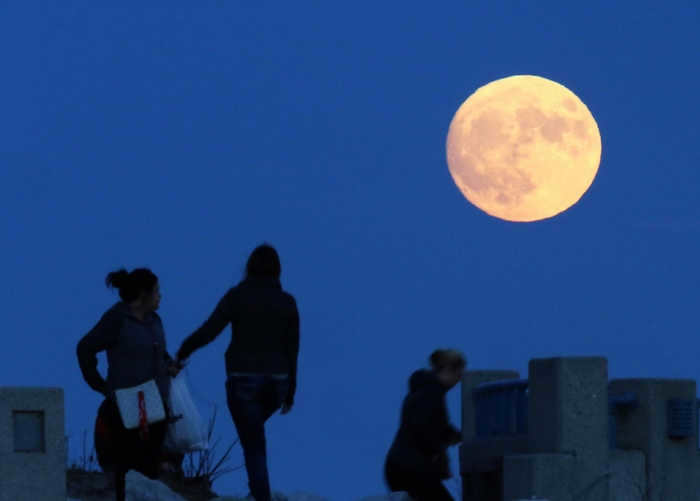
The largest moon in 70 years appeared in downtown Dallas on November 13, 2016. (Photo by Tom Fox).
When viewed from Earth, the Moon’s surface seems to be flat, with only light and dark colors. However, even with binoculars or a small telescope, it becomes apparent that this is not the case. When Galileo Galilei first observed the Moon through his homemade telescope, he made an interesting observation:
We have concluded that the surface of the Moon is not smooth, flat, or perfectly spherical, as many philosophers believed, but rather uneven, rough, and marked with depressions and elevations.
The Moon’s surface displays a fascinating array of features, including mountains, valleys, deep crevices, and craters. Let’s delve deeper into the unique relief details found on the lunar surface. Many of these features are visible to the naked eye, offering a captivating sight for observers.
Oceans and landmasses
Upon gazing at our celestial neighbor, one can easily discern contrasting light and dark areas that form intriguing patterns. Traditionally, the dark regions were believed to be akin to Earth’s oceans, suggesting the presence of water. Conversely, the lighter regions were considered to be dry landmasses, resembling continents.
Indeed, it is well known that the Moon does not have actual water seas, but the dark regions are still referred to as such. These regions even have designated names – Sea of Rains, Sea of Clarity, Sea of Crises, and there is even an Ocean of Storms. Additionally, there are numerous smaller formations, which are also named after Earth’s bays, lakes, and marshes.
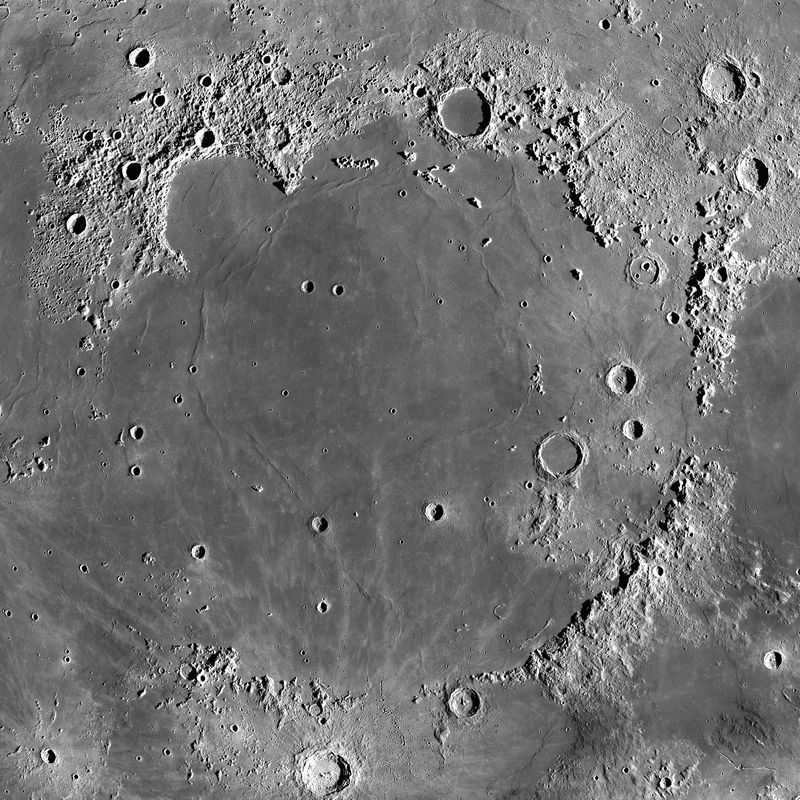
Indeed, the expansive lunar seas and other dark regions are actually vast, relatively flat areas that were created by the eruption and subsequent solidification of lava. This remarkable phenomenon took place during the early stages of the Moon’s existence when it was still geologically active, shortly after its initial formation. The filling of these seas with lava occurred approximately 3.8 to 4 billion years ago. As a result, the towering mountains that once graced the lunar landscape and were not completely submerged still remain visible as solitary peaks amidst the seas.
Craters and Cirques
When observing the Moon with 10x binoculars, it is evident that its surface is covered with numerous craters, particularly in the light-colored regions of the continents. These craters are rounded formations that resemble pockmarks on the lunar surface, featuring a central slide. Some craters, known as cirques, lack a central slide, but they are essentially a type of crater.
The majority of craters on the Moon are the result of impacts from large meteorites. These impacts create craters of various sizes and eject a mass of rock into the surrounding area. As the debris falls back to the Moon’s surface, it forms smaller secondary craters. These secondary craters can be observed around the larger craters and were formed simultaneously, originating from the falling debris.
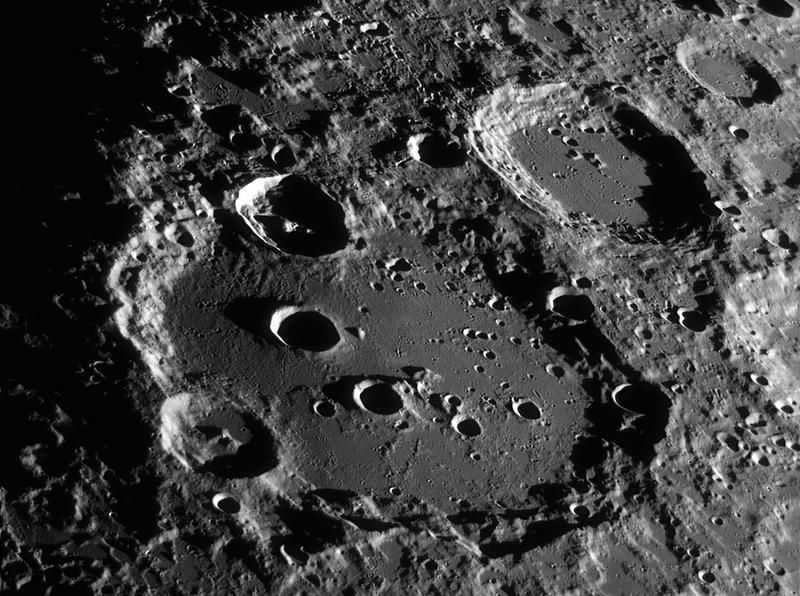

Clavius crater. Image taken from an orbit around the Moon.
The Moon is home to a multitude of craters, varying in size and type. There are a total of 5185 craters with a cross-section larger than 20 km, and over 17000 craters with a cross-section larger than 3.5 km. If we were to count all of the craters, including the smallest ones, the number would exceed one million.
The largest known lunar crater is Apollo, which measures 524 km in cross-section. It is situated on the far side of the Moon, making it invisible from Earth. On the visible side, we can find the Baia crater, with a diameter of 301 km, along with many other impressive craters.
Some craters are arranged in chains, forming a straight line. These are typically secondary craters that formed from the debris of primary impacts.
Mountains and mountain ranges
The mountains found on the Moon bear similarities to those found on Earth. Although lacking glaciers, rivers, and vegetation, they consist of the same rocky formations, reaching heights of several kilometers. While the Moon lacks the wind and rain that erode earthly mountains, its mountains still undergo erosion over time. This erosion is caused by various factors, such as space weathering, which includes solar radiation, radiation, and significant temperature fluctuations. These factors gradually cause the rocks to crack and disintegrate. As a result, the mountains on the Moon crumble and become smoother, with some craters being almost level with the rest of the lunar surface.
Mountains on the Moon are typically organized in chains or ridges, and they bear names that frequently mirror those found on Earth. Some examples include the Appenines, Altai, Carpathians, Caucasus, and Alps. The tallest peak on the Moon is Huygens Peak, situated on the southern edge of the Sea of Rains within the Appenine Mountains. This mountain reaches a height of 5.5 kilometers above the lunar sea level, a remarkable feat even when compared to Earth’s mountains.
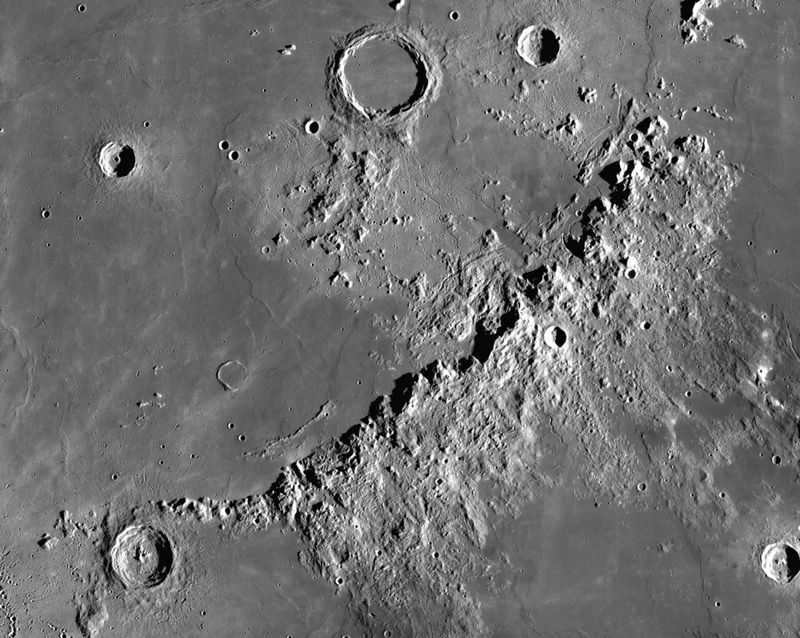
The Appenine Mountains on the Moon are a fascinating feature. The crater Eratosthenes can be seen at the bottom left, while Archimedes is located above it. Huygens Peak, also found in these mountains, adds to their allure.
Interestingly, despite their grandeur, the mountains, including Huygens Peak, are not the highest points on the Moon. The highest point can be found near Engelhardt Crater, situated on the far side of the Moon. In fact, this point is 6.5 km further from the lunar center than Huygens Peak. Although not a mountain, it holds the distinction of being the highest point on the lunar surface.
It’s worth noting that the difference in altitude between the highest and lowest points on the Moon is a staggering 18.1 km. This showcases the impressive scale of the lunar landscape, which is reminiscent of our own planet and commands admiration.
There are furrows present on the Moon’s surface. When observed through a telescope, they appear as if someone has drawn a straight line across the rugged landscape, flattening everything in its path. These furrows resemble long trenches, stretching for hundreds of kilometers with a relatively narrow width.
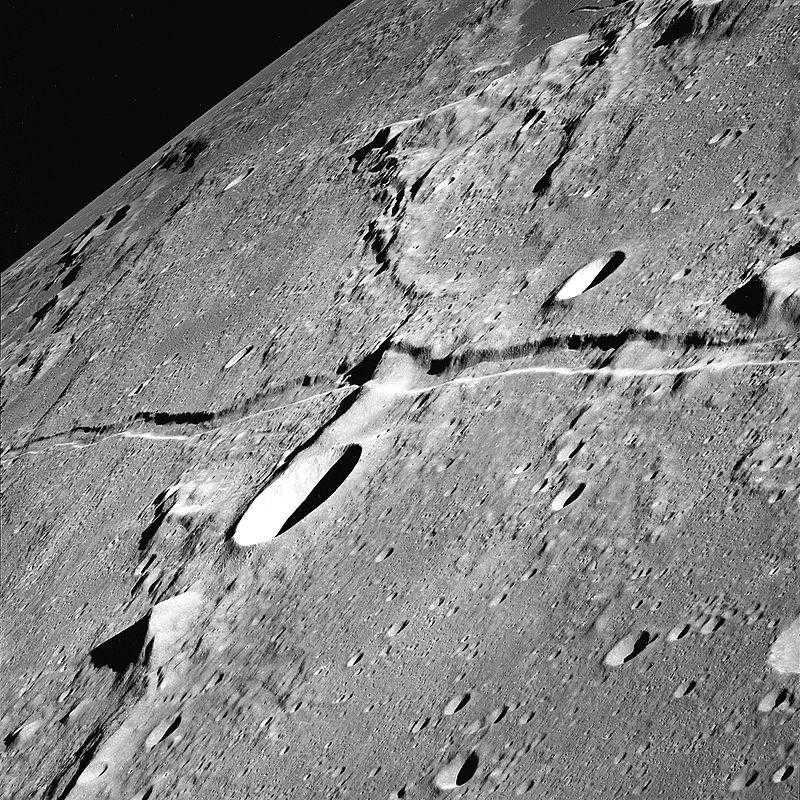
Aridea furrow on the Moon. Created by NASA (image taken by Apollo 10) – Apollo 10 Photography
The origin of these furrows is still uncertain. There are theories suggesting that they formed due to the impact of large meteorites. However, there are other explanations as well. One possibility is that they emerged when the Moon was geologically active. During this period, certain regions may have experienced subsidence along fault lines, while others rose. The furrows represent depressions, known as grabens.
These furrows can appear individually or as part of larger systems on the Moon.
Escarpments
These are also quite intriguing features of the lunar topography. An escarpment is created when one section of the lunar surface sinks in relation to another section. It is similar to grooves, except that in grooves the middle part is lowered, whereas escarpments consist of only two raised sections. These formations are also referred to as drop-offs.
The most famous example of an escarpment on the Moon is the Straight Wall, although it is not the only one. However, it is the most well-known and easily accessible. The Straight Wall is situated in the Sea of Clouds, stretching for 120 kilometers in length and reaching heights of up to 300 meters. Approximately one week after the new moon, it casts a large shadow and becomes highly visible.
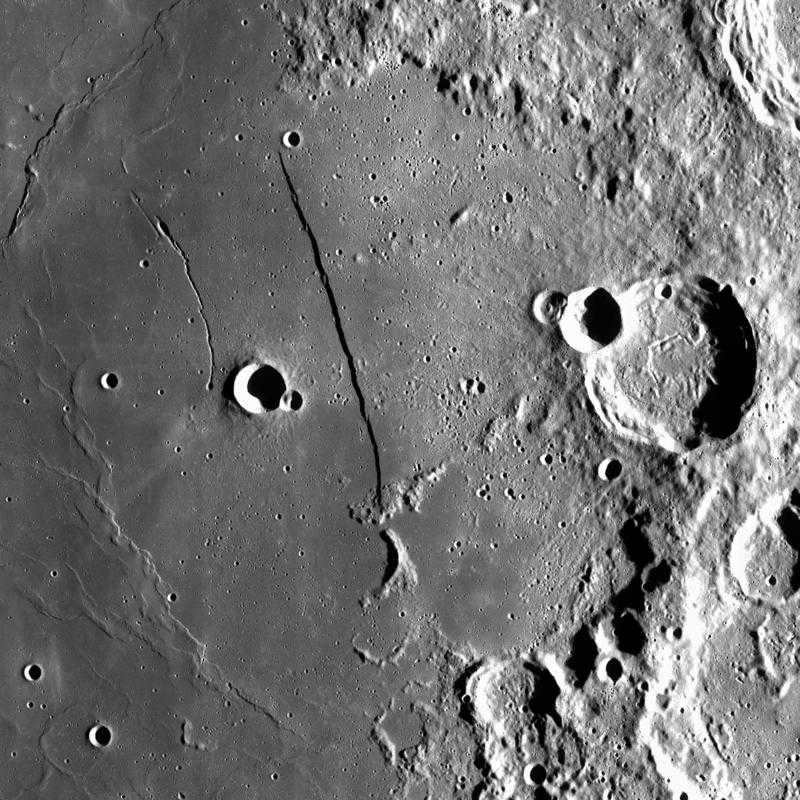
The Moon has a feature known as the Straight Wall, which is the largest among eight similar formations on its surface. This image of the Straight Wall on the Moon was captured by the Lunar Reconnaissance Orbiter, a spacecraft operated by NASA.
Mountain Ranges
Mountain ranges are elongated elevations that can extend over vast distances. They bear resemblance to undulating folds of land and can frequently be observed in lunar seas. They are occasionally referred to as veins due to their similarity to the prominent veins on the human arms.
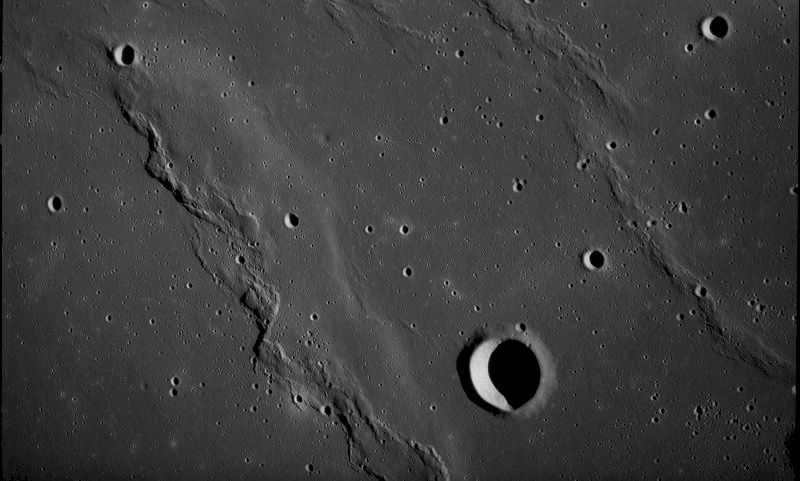
This is the appearance of lunar ridges.
The ridges were created as a result of the solidification and compression of the lava that flooded the lunar seas. This compression caused a slight deformation, resulting in the formation of these long elevations resembling waves. Ridges can also be found surrounding ring seas or craters, following their circular shape. When a ridge crosses over a mountain that was once flooded by lava, it also bulges in that area, mimicking the terrain.
Ridges are not exclusive to the lunar surface, as they can also be found on other planets such as Mercury and Venus.
Mascons
These peculiar formations may not appear distinct from the surrounding terrain at first glance. They are simply sections of the lunar surface where gravitational anomalies are observed, resulting in an increased gravitational force compared to other areas.
There are various theories regarding the origin of these phenomena. One thing is certain – the density of matter in these locations is heightened, resulting in a greater mass and therefore a slightly stronger gravitational pull.
According to one hypothesis, a substantial portion of a meteorite may be buried beneath the surface. This is supported by the fact that mascons are often found at the center of large craters. However, this theory has a drawback – the meteorite would need to be exceptionally massive, composed entirely of iron or another metal.
There is a more probable hypothesis. A significant meteorite collision created a profound crater, causing the lunar crust to thin by several kilometers in this area. The underlying mantle then pushed upwards, resulting in the solidification of its upper layers and the formation of a massive shallow layer just below the lunar surface. Occasionally, the magma would erupt and inundate the entire crater.
Undoubtedly, this event could have occurred during a time when the Moon was an actively geologic entity, approximately 4 billion years ago. However, there are also certain mascons that are situated beneath lunar seas, which exhibit a distinctive rounded shape – such as the Sea of Crises, Rains, Clouds, Clarity, and others. It is highly probable that these lunar seas also originated from the outpouring of magma, which solidified into a basaltic layer. In the mascon region, therefore, the entire depth would consist of this basaltic layer, extending all the way to the mantle itself, as it breached the surface and flooded the surrounding area for hundreds and thousands of kilometers.
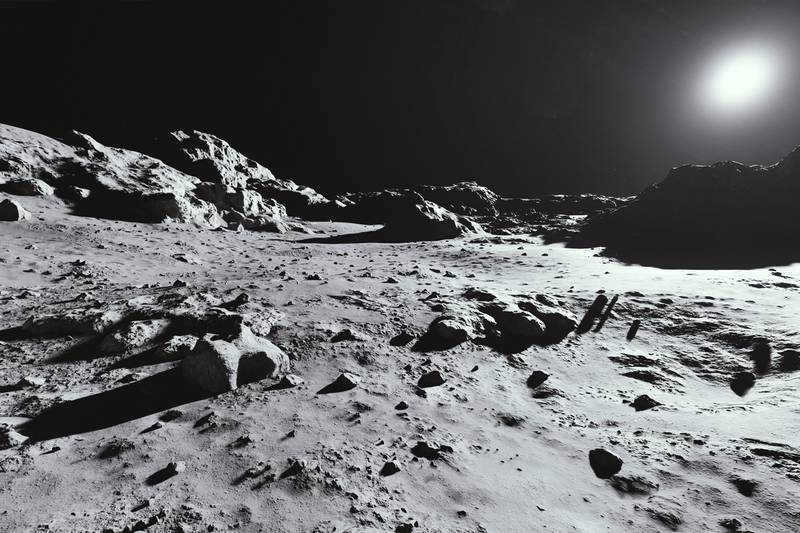
You can observe all these details of the lunar surface by using even a small telescope. The only thing that may not be visible are the mascons, as they are not an actual object, but an anomaly located beneath the surface. However, you will be able to see seas, craters, mountains, ledges, and furrows. To assist you in your observations, it is recommended to use a high-quality map of the Moon, as almost all interesting objects visible through a small telescope are labeled on the map.
For binocular observations, there are regular maps available, and for telescope observations, there are inverted maps.
The Moon is Earth’s sole natural satellite. It is visible in the sky on a daily basis. The Moon exerts a significant influence on the planet as well as on human psychology. The investigation of this satellite has been ongoing for more than 2,000 years and is still ongoing today. Despite the advancements in technology, scientists still possess numerous unanswered queries. Today, we will examine the ratio of Earth’s size to that of the Moon and explore the consequences if our planet were to lose its loyal companion. Let’s commence!
The moon exists.
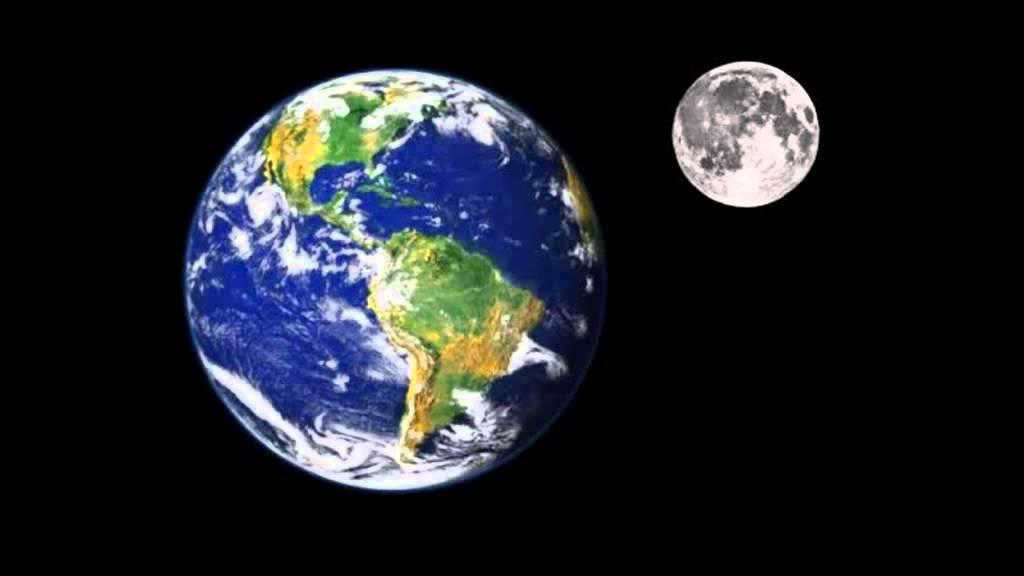
Despite the long-held belief that the Moon is a natural celestial body, there has been recent speculation surrounding its artificial origins. This speculation arises from the presence of certain man-made objects on the lunar surface, as observed by scientists.
It is widely known that the Moon lacks an atmosphere and any sounds, resulting in a perpetually black sky above. However, it also contains seas, oceans (formed by frozen lava), and numerous craters. The formation of the Moon and its current position continue to be a topic of great interest and inquiry among scientists.
Interestingly, the Moon is constantly moving away from Earth at a rate of 3.8 centimeters per year. Some scientists even propose that in 50 billion years, the Moon will completely detach from Earth. However, this theory remains contentious and is not widely supported by the scientific community.
What is the size ratio between the Earth and the Moon?
Many years ago, scientists discovered that the Moon is only one-sixth the size of the Earth. To truly grasp the magnitude of this difference, one can simply look at a photograph. Visual information tends to be more easily understood. This is the exact number of times that the Earth is larger than the Moon. The contrast is truly staggering!
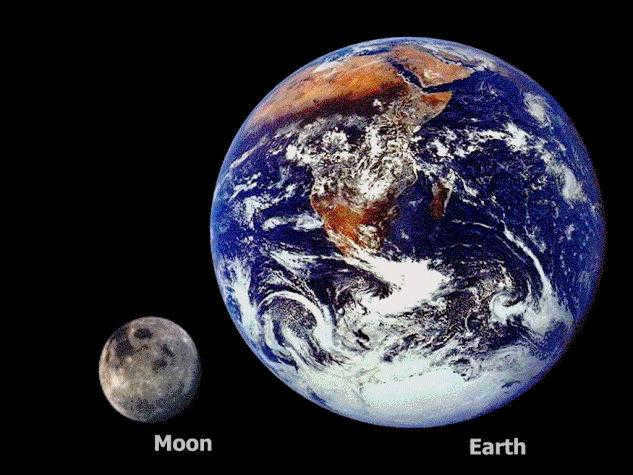
When viewed from Earth, the satellite appears relatively small, measuring about 30 cm in diameter. However, when viewed from the horizon, its size becomes more impressive.
The Moon has a radius of 1737.1 kilometers, while the Earth has an average radius of 6371.0 km. This means that the satellite is 3.667 times smaller than the planet.
How many times larger is the Earth than the Moon in terms of diameter (which is equal to two radii)? This figure is 3,476 km. It is with these numbers that the distance from Moscow to Tomsk is calculated. As we know, the equatorial diameter of the Earth is 12,757 km. Therefore, the Moon is four times smaller than the Earth in terms of its cross-section. More precisely, the cross-section of the satellite is equal to 0.272 of the cross-section of our planet.
What is the difference in size between the Earth and the Moon? The Moon has a surface area of 37.93 million square kilometers, while the Earth has an area of 510.1 million square kilometers. In other words, the Moon’s area is equivalent to the combined size of Russia, Canada, and China.
How does the Earth’s volume compare to the Moon’s? The Moon is nearly 50 times smaller in volume than the Earth, occupying just 2% of the total space.
The satellite has a density of 3.34 g/cm³, which is equivalent to 60% of the Earth’s density. The reason for this difference in density is the Earth’s larger size and the greater pressure within its interior. The Earth’s interior consists of a massive core, which contains 32% of its total mass. In contrast, the Moon’s core can only hold up to 5% of its mass, making it approximately 350 kilometers in size.
The Earth is 81 times larger in mass than the Moon. Newton attempted to calculate the mass of a satellite, but his results were twice as high as the actual mass. It is important to note that the mass of an object is determined by the amount of substance it contains within a given volume. The more substance it has, the greater its weight, requiring more effort to lift or move it.
The gravitational force on the Moon’s surface is six times weaker compared to Earth.
The luminosity of the celestial body
It is also important to take into account the luminosity of the Moon. The Moon’s reflectivity, or the brightness visible to us from Earth, is three times lower than that of our planet. This means that the Moon’s illumination is 41 times fainter than Earth’s when observed from space. This translates to a difference of 4m star magnitudes.
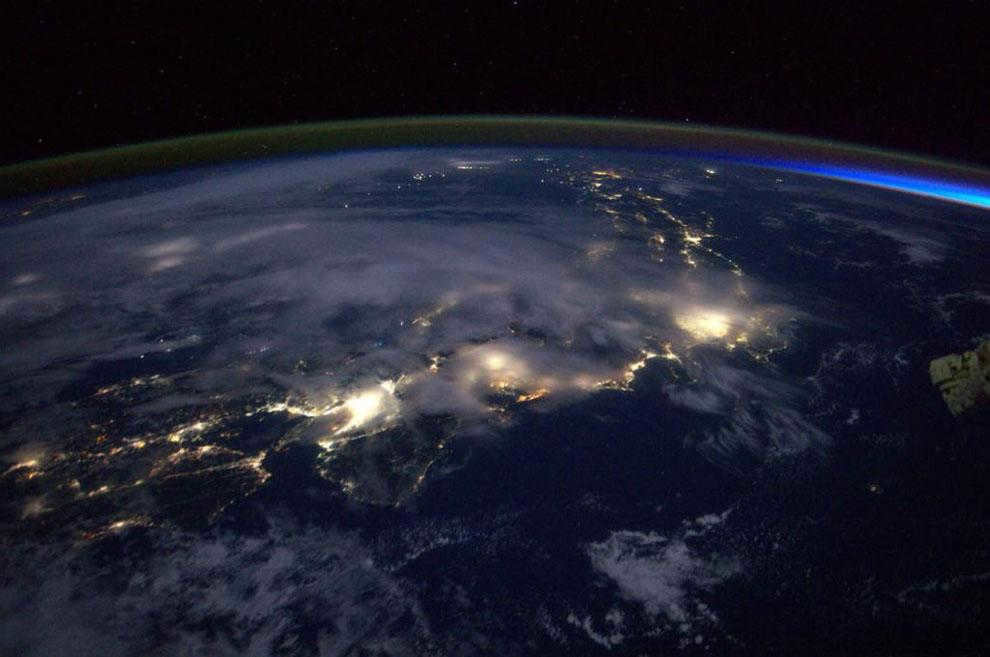
Life on our planet may never have emerged if it weren’t for the moon. The moon is responsible for the changing of seasons, preventing temperature swings from becoming too extreme. Without it, areas that experience African summer could easily transition to Arctic cold. Additionally, our nights would be much darker, especially when observing the full moon in the sky.
Without the moon, we would miss out on the incredible phenomenon of a solar eclipse. The moon’s strategic placement allows it to completely block out the sun when it aligns with the Earth.
The length of our year would be drastically different without the moon. Not only does it control the tides, but it also slows down the Earth’s rotation. Without the moon, our days would only last eight hours, resulting in a year that spans approximately one thousand days.
In addition to providing a beautiful backdrop and inspiring feelings of romance, the Moon also plays a crucial role in shaping our planet. Despite its vast distance and the lengthy journey it takes to reach it (approximately 3 days), the Moon has a tremendous impact on Earth. Without its presence, the topography of our planet, including the formation of mountains and plains, would be drastically different.
